
Photography by Zack Bent
A Mixed Media Composite of Influential Women
On the top floor of the Seattle art gallery, Museum of Museums, one is immediately greeted by a small gathering of beautifully-painted ceramic figures, all femme. Followers of Counts’ work may have noticed more isolated presentations of similar characters in the past, but Sea of Vapors expands them from 12-to-18-inch figures to strikingly life-sized.
“My practice of doing things that are figurative comes out of… [a] practice of doing self-portraiture,” says Counts, who has a BFA in Painting from the California College of Art and Crafts. “Then I started thinking of the figures as portraits of the specific women that have passed away that were really important to me, as well as my mother, who’s still alive.”
The first character one meets is the “Vampire Florist,” who is a semi-autobiographical reference to Counts’ past job as a florist. Draped in a bright orange robe, she holds gardening clippers in one hand and a wilting flower in the other. Her decaying flora is one small example of other overly-ripe plant life that is found throughout the entire installation.
“[The decay is] referencing the bodies, how bodies change, and the place I’m at in my life right now,” says Counts. “I think that does tie in with the figures, my thoughts about the women that are older than me, and where I’m headed. [It’s] trying to find peace with the aging process and beauty and strength — and sort of seeing that in the natural world.”
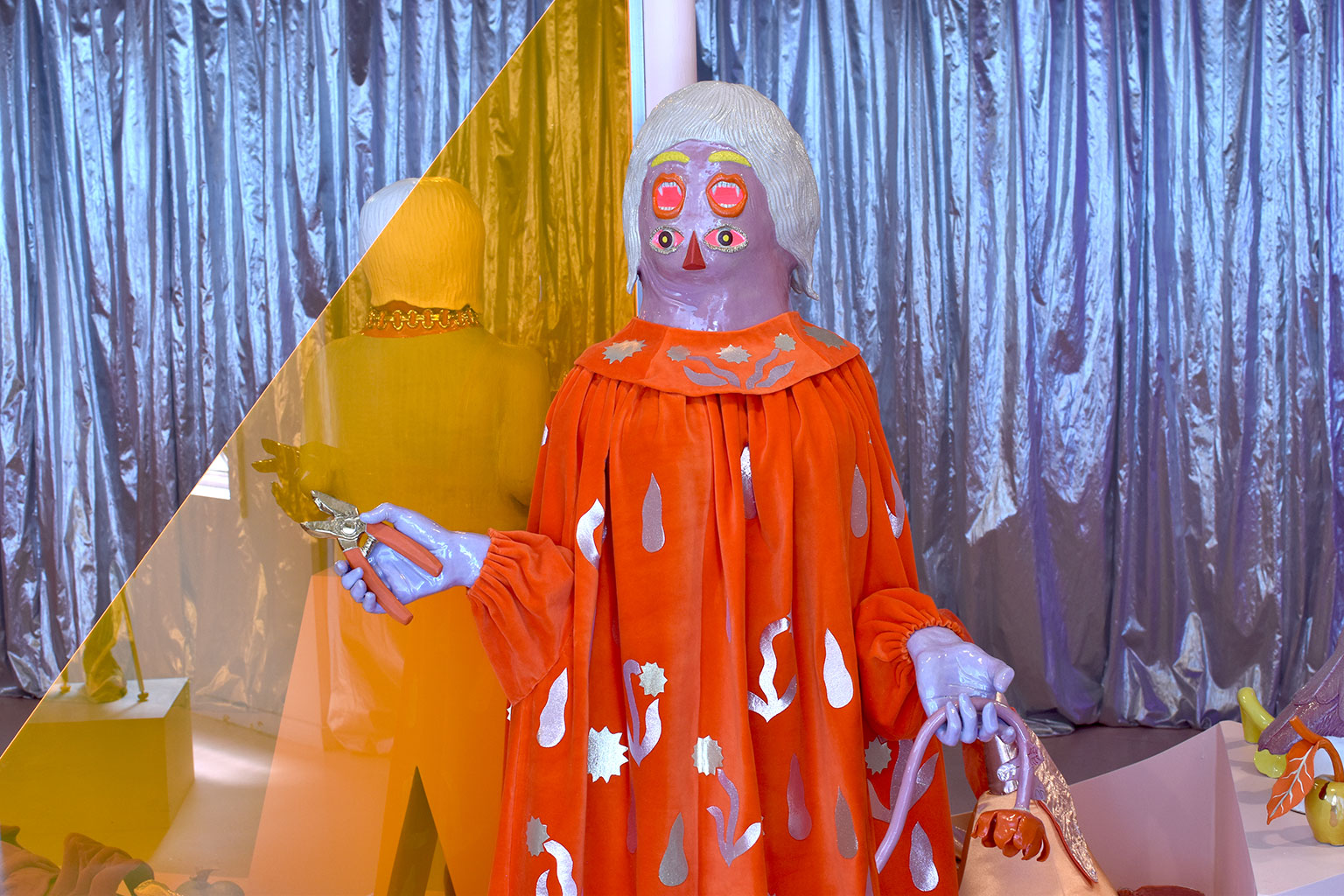
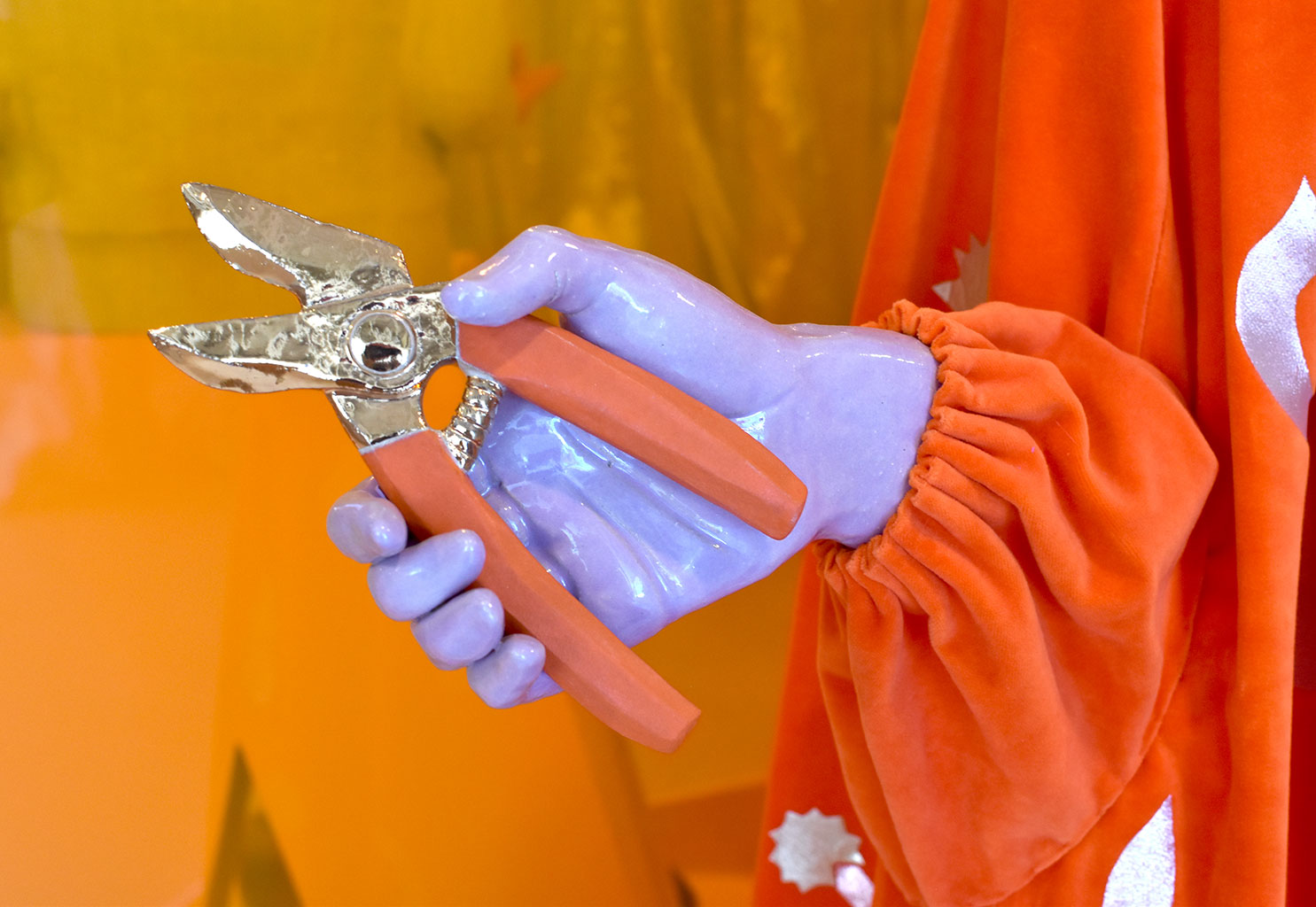
The other figures in Sea of Vapors represent women who are important to Counts, such as her mother, grandmothers, and best friend. Some hold objects such as candles or telephones; others have lightboxes or mirrors embedded in their bodies. They are accented by ceramic flora and fauna, plexiglass geometries, and small elements of luminescence.
“The figures are these… emotional composites. They’re also, in different ways, taking little attributes from their physical characteristics,” explains Counts. “It’s a way to… meditate on what these people have meant for my life and how they’ve influenced my artistic path. [With] most of those women in my family, there’s kind of like an artistic practice, to some degree… I just think that’s interesting: the way genetics works out.”
All of Counts’ figures begin with drawings, which pull from memories, instincts, or the desire to see something she has never seen before.
“When I draw [the figures]… I’m just channeling something. I may have a loose idea, but that’s where a lot of surprises happen creatively,” she explains, “Then, I really try to hold true to the essence of the drawing when I follow through into the sculpture.”
“l work really intuitively…” Counts continues. “I’m not incredibly conceptually driven, so sometimes, I don’t even understand what things are about until after it’s finished.”
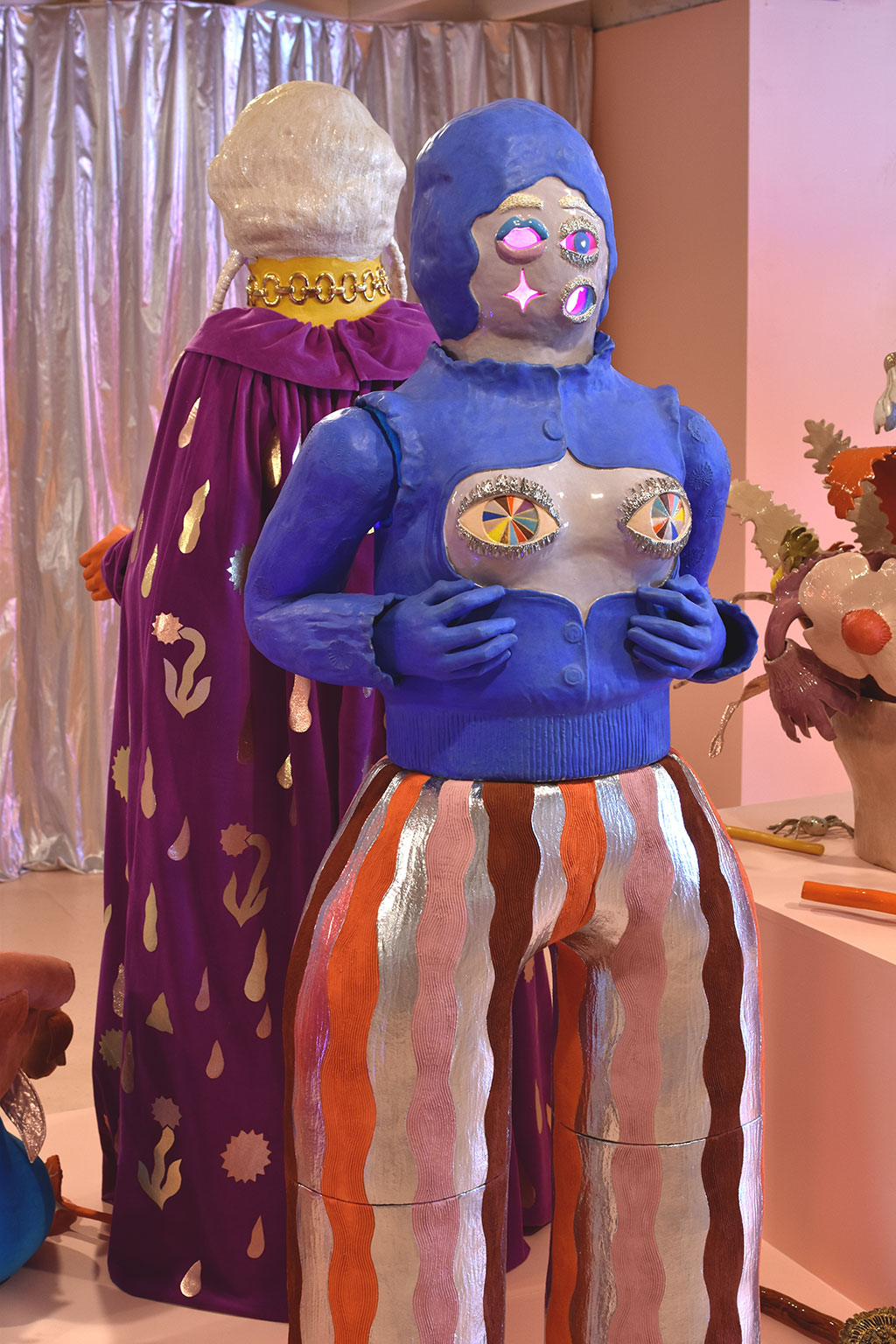

A Collective Journey to a Place of Power & Magic
Yet Sea of Vapors does in fact have a cohesive conceptual underpinning which drives the entire installation. The show’s title is translated from the Italian name, Mare Vaporum, which is a term coined in 1651 that represents a specific dark patch on the moon.
“I just love… everything that comes to my mind when I hear that phrase,” explains Counts. “I’ve always really been drawn to it.”
An astute viewer might notice that all of the figures are aboard a boat heading towards another room, as though they were collectively on a journey together. Vibrant colors, silver curtains referencing Twin Peaks, and smatterings of blacklight play together to offer a tinge of the otherworldly.
“I have been working on these figures that are outside of time and space and putting them in a space that’s outside of time and space,” says Counts, who notes that the figures can be perceived as “vapors,” or a type of ghost. “It’s kind of a dream world… a reference to different concepts of the afterlife, but it’s also kind of a memory. Kind of all aspects of time.”
In the second room, visitors find themselves face-to-face with a massive figure who is affectionately named the “The Grandmother Wizard Queen.” She wears a crown and is draped in shiny fabrics suitable for royalty. Behind her is a video projection, and she is flanked on both sides by soft sculpture moths, while a spider is featured prominently on her stomach. Counts describes The Grandmother Wizard Queen as a “place of power and magic” — a figure that brings a notable sense of gravity but somehow feels benevolent.
“The figures [on the boat] are going to see her, but they’re also going to meet that part of themselves that’s all powerful, all-knowing, or a concept of the higher self,” she explains.
While this narrative description could be perceived as rather spiritual, it is also intended to be somewhat vague, in part because Counts appreciates the varied interpretations that viewers may bring to the work. After all, even her own perceptions of the work are always in flux.
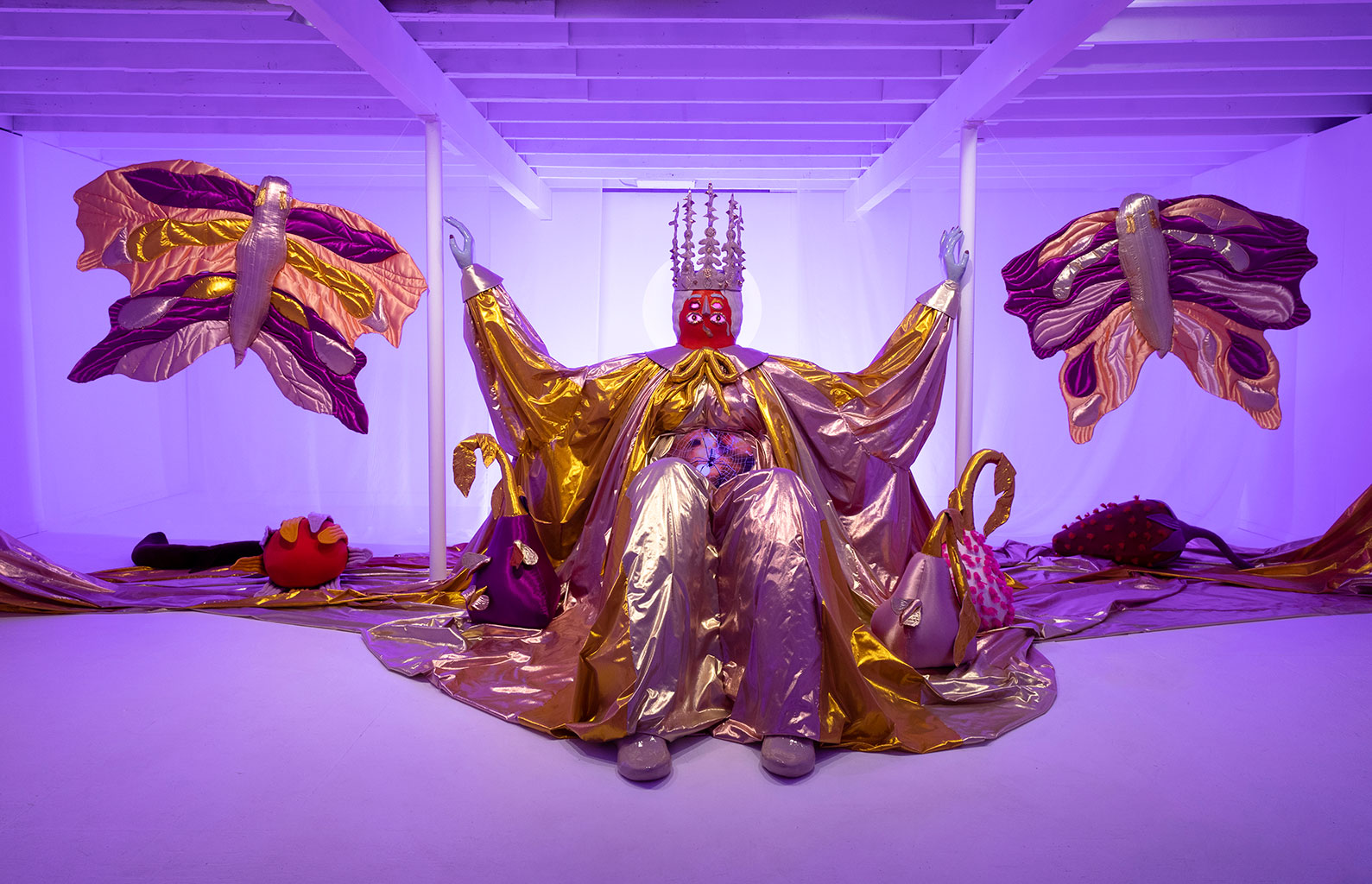
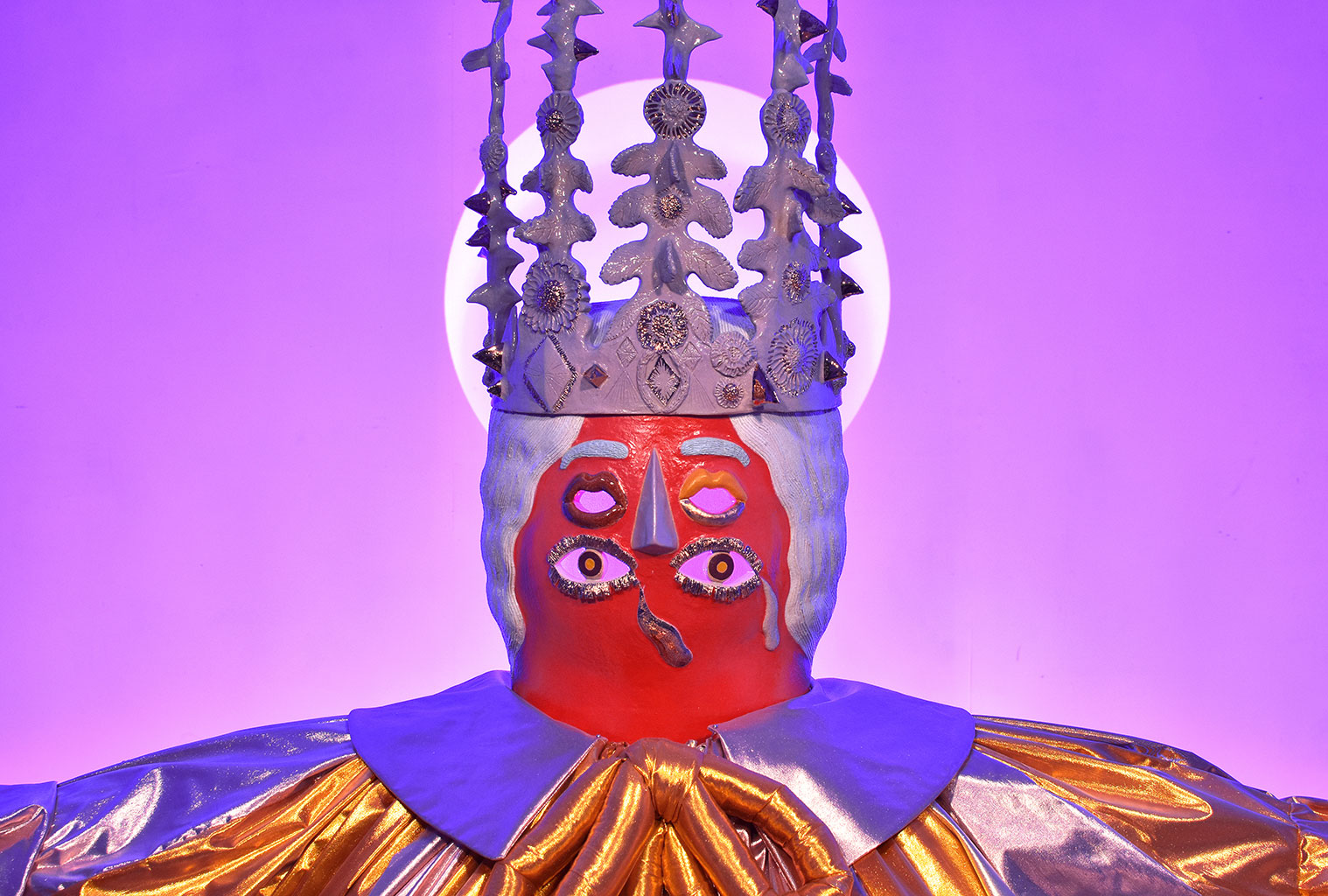
New Experiments in Soft Sculpture and Color
Over the years, Counts has demonstrated a high level of technical proficiency in drawing, painting, and hard sculpture, such as ceramics — but it had been a while since she had done an installation, and she had never really attempted soft sculptures before. For Sea of Vapors, Counts learned how to hand-dye velveteen, sew more proficiently, and make heat transfer patterns onto garments.
“I had a sketch; I could picture the materials, but I didn’t have the same confidence, because it wasn’t ceramics or a material that I’ve been working with a lot…” says Counts. “The textile and soft sculpture parts of the show were really exciting and satisfying, but also it felt risky.”
In working with new materials, Counts was able to expand upon her usual color palette. Sea of Vapors incorporates a combination of earth tones like browns, reds, oranges, neons like pinks and yellows, metallics like golds and silvers, and loud pops of royal blues and purples. Despite their diversity, the overall feel is warm and cohesive.
“The palette that I work with with ceramics is limited [based] on what you can get with glazes. There’s certain colors you just can’t get,” Counts explains. “I had these ideas for the velveteen — certain colors that I associated with various memories — and I couldn’t find them when I was trying to buy them. So it was just like, ‘Okay, I’m gonna have to learn how to dye it.'”
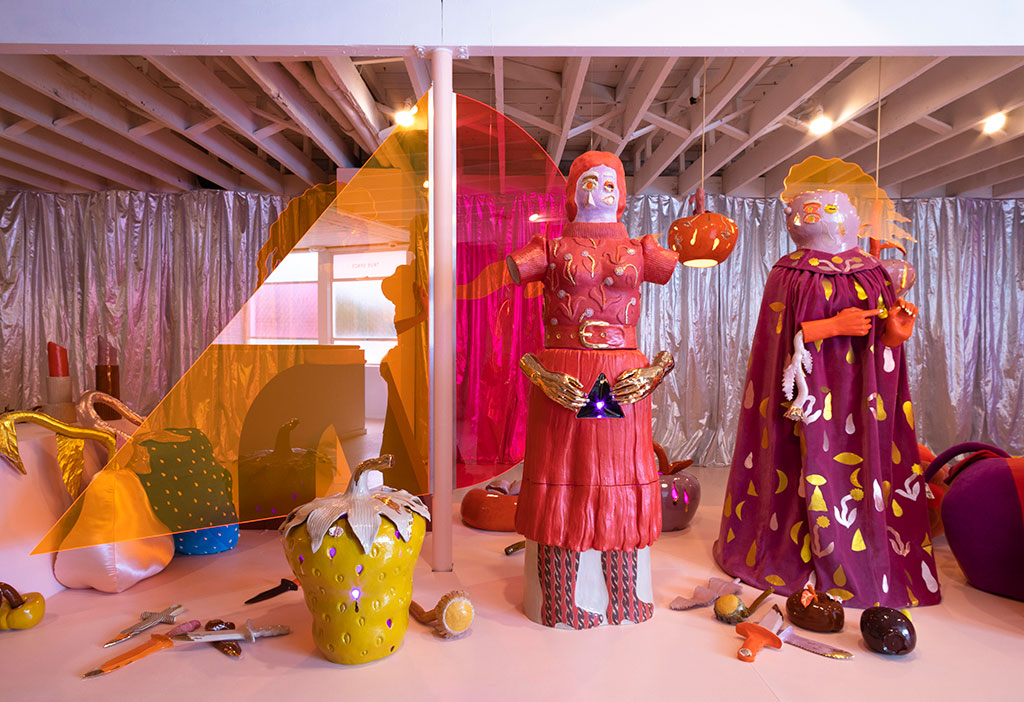
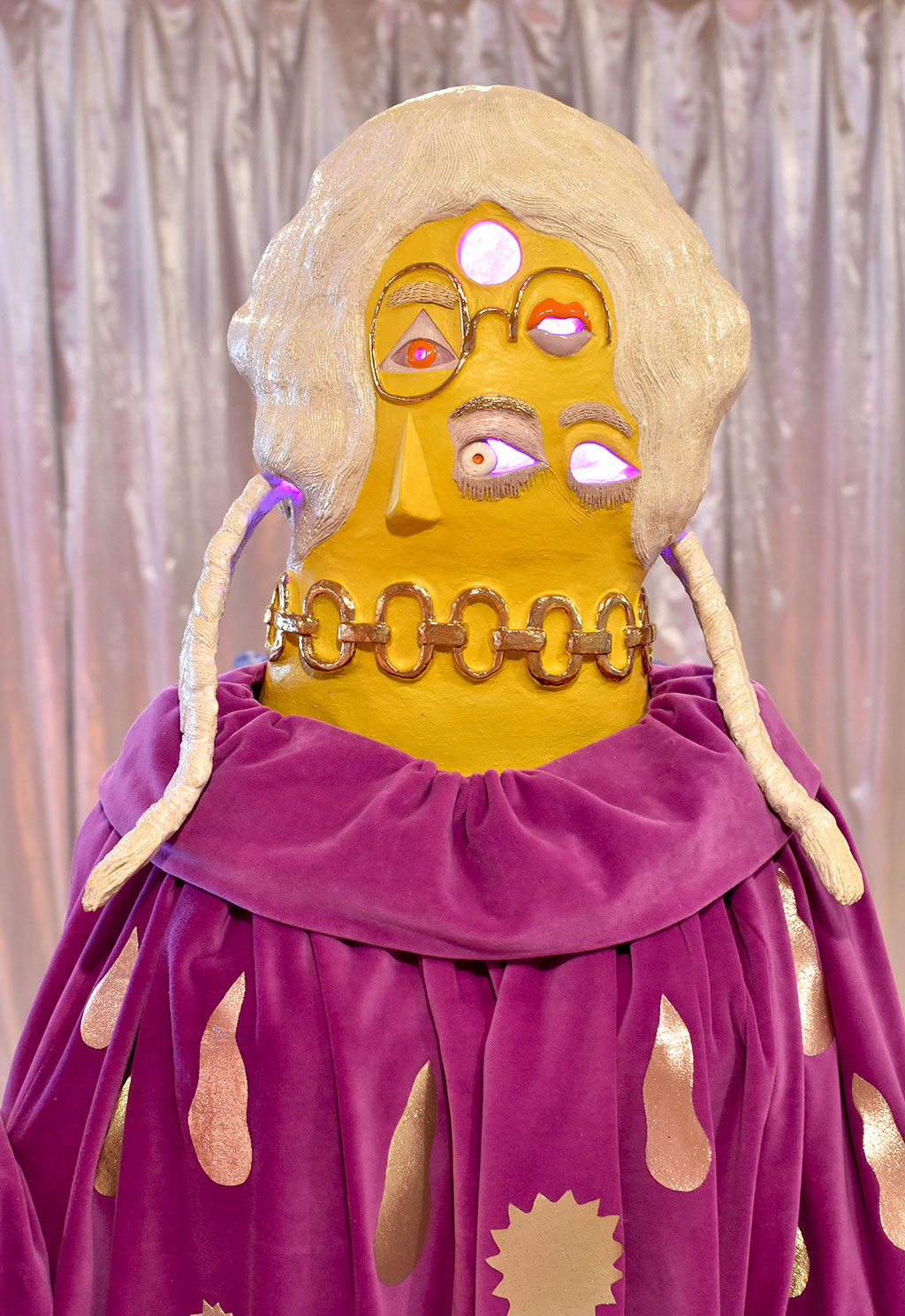
The desire to learn how to do just about everything is one that Counts has brought with her throughout her career. When she had her own jewelry line, she learned to work with metals; she has also done woodworking and taught herself how to do stained glass. In the near future, she plans to make her own shoes.
“Learning how to do things with materials or getting new tools is just one of my favorite parts about being alive,” she shares.
Such passions can be seen symbolically in The Grandmother Wizard Queen. The spider embedded in the figure’s stomach symbolizes the “artistic, creative piece of me and of people,” explains Counts.
“That’s one of the most magical things that people can do: being creative,” Counts continues. “[The Grandmother Wizard Queen is] about strength. It’s about being powerful in a peaceful way, and being strong in a gentle way — and meeting that part of yourself.”
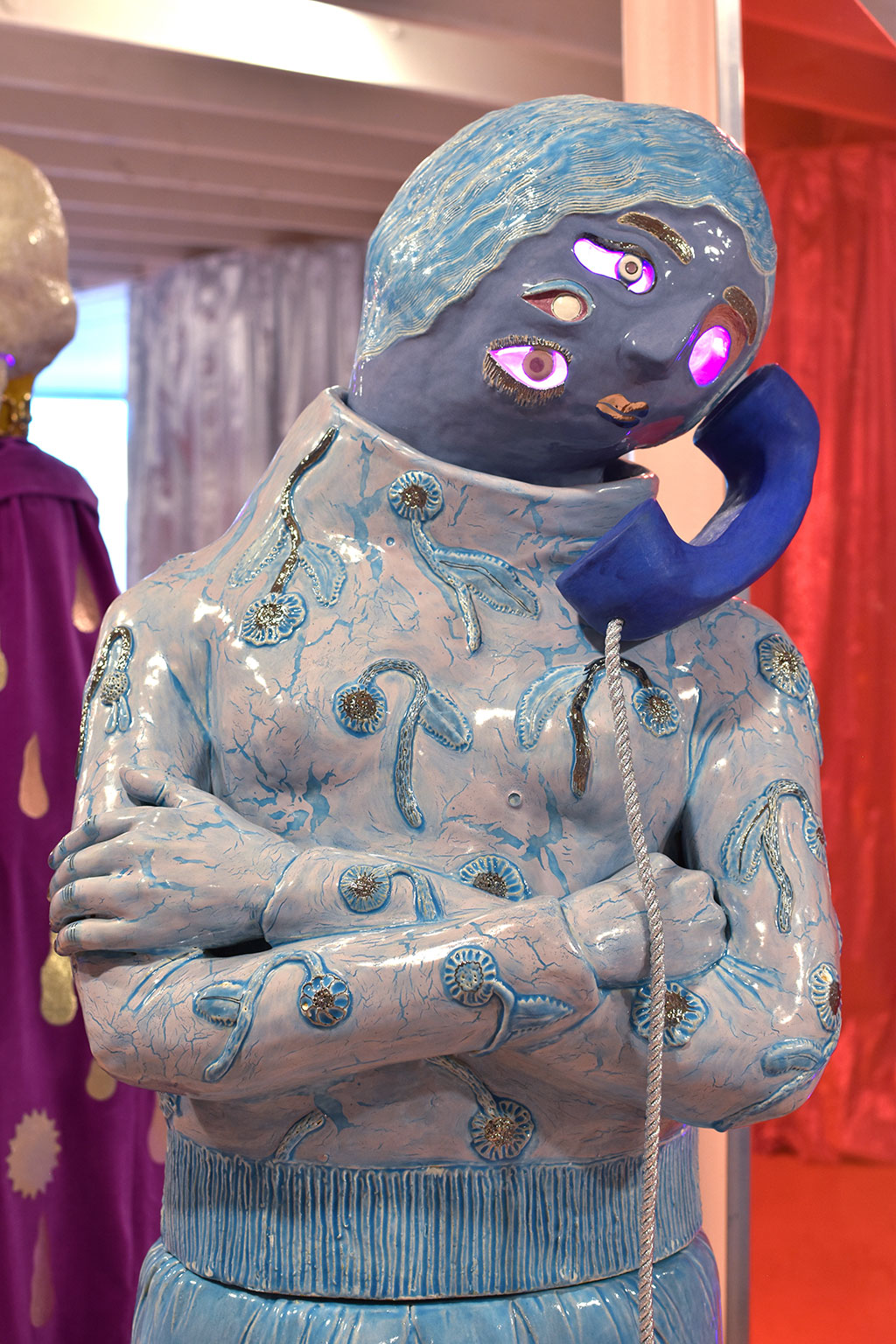
Ω






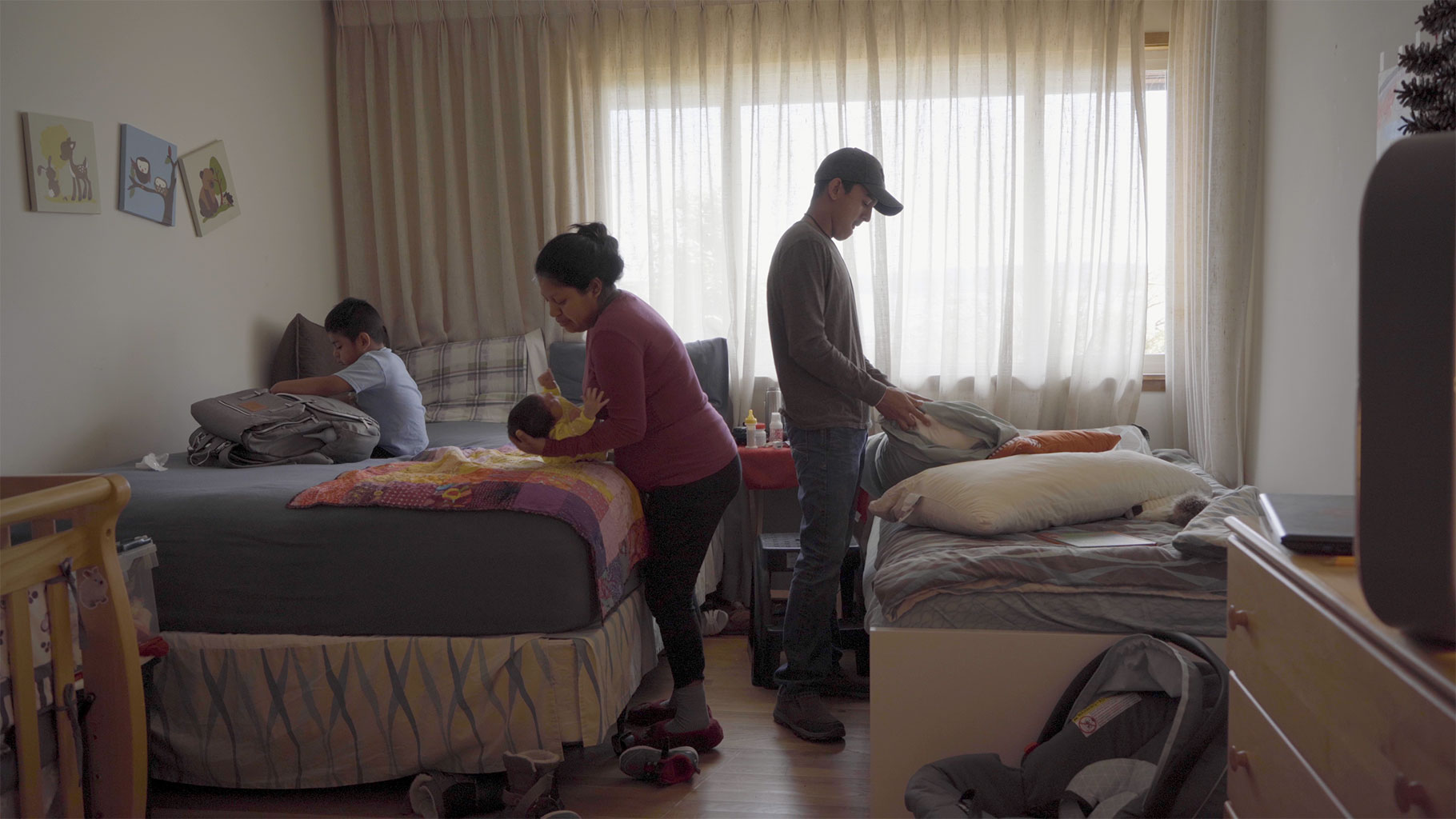
Beautiful work. Thank you for posting this for those of us who unfortunately can’t see the show in person!